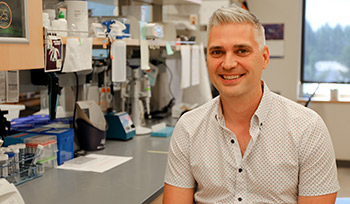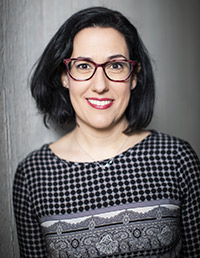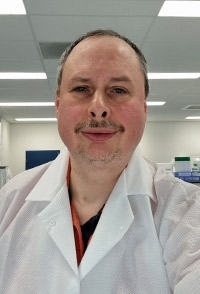Beyond Stem Cell Transplantation?
New amfAR grants support potential pathways to a practical, accessible, affordable HIV cure
New amfAR grants support potential pathways to a practical, accessible, affordable HIV cure
Building on a 40-year legacy of fueling innovation by funding promising yet untested HIV research, amfAR recently announced its latest suite of three grants totaling $1.3 million.

“Right now, we can cure some people living with HIV some of the time, and these new grants will enable researchers to test exciting ideas about how we can push into the next phase: curing more of the people, more of the time,” amfAR CEO Kevin Robert Frost said. “That is an important step on the path to our ultimate goal: curing most of the people, most of the time.”
First, Jonah Sacha, PhD, of Oregon Health and Science University in Portland, aims to reproduce the curative effects of stem cell transplantation without resorting to the costly, high-risk procedure.
In one of the most startling research findings of 2023, supported by amfAR, Dr. Sacha reported that a monkey infected with SIV, the simian counterpart of HIV, had seemingly been cured after undergoing a stem cell transplant. Crucially, the transplant involved “normal” donor cells as opposed to cells with mutated, inactive CCR5, the critical co-receptor for HIV’s entry into a cell. This CCR5 mutation, which renders most cells impervious to HIV infection, appears to have been central to most of the seven confirmed human cure cases to date.

Given his research findings, it was not surprising to Dr. Sacha that two of these seven individuals— the “Geneva patient” and the “second Berlin patient”—used cells from donors that still had functioning CCR5. He proposed that allogeneic immunity, or a graft-versus-host response—a key part of certain cancer cures following stem cell transplants with normal donors—was involved and might be replicated without requiring a transplant.
Documenting what the precise target was in his monkey experiments forms the basis of a new $479,765 amfAR grant to Dr. Sacha. He has preliminary data that a “minor” antigen on white blood cells is involved, and that administering killer CD8+ T cells trained on this target to SIV-infected monkeys would reproduce the effects of the transplant itself, opening the way for similar approaches in humans.
Second, the current “holy grail” of HIV cure research is administering a single injection of a gene-editing enzyme such as CRISPR-Cas to inactivate the CCR5 gene in people with HIV, effecting a cure without the need for a stem cell transplant. With a grant of $479,249, Elena Herrera-Carrillo, PhD, of the University of Amsterdam in The Netherlands, will use lipid nanoparticles (LNPs), like those used in COVID-19 mRNA vaccines, to deliver gene-editing enzymes capable of inactivating the CCR5 gene, and thus rendering those cells immune to HIV, as well as cutting out HIV from cells already infected. In a previous study, Dr. Herrera-Carrillo designed LNPs capable of removing latent HIV from 95% of infected T cells in a test tube; she’ll now expand the study to humanized mice. Importantly, Dr. Herrera-Carrillo will also train Ugandan scientists in her lab so that, if the technique shows promise, the research and manufacturing processes can be transferred to Africa.

Finally, Alexander Pasternak, PhD, also of the University of Amsterdam, seeks to reinvigorate research into latency reversal agents (LRAs), which have shown promise in test tubes but have been disappointing clinically. LRAs are chemicals capable of activating dormant HIV that cannot be targeted by antiretroviral therapy (ART) and is thus the main barrier to an HIV cure. With a grant of $383,742, Dr. Pasternak will work with T cells from people living with HIV taking ART and attempt to identify novel combinations of LRAs that can remove all obstacles to full reservoir activation.
“amfAR is thrilled to support these three scientists, who each bring fresh and exciting perspectives to the field of HIV research,” amfAR senior scientific consultant Dr. Jeffrey Laurence said. “Each new successful HIV cure through stem cell transplantation is exciting, but we urgently need alternative, more practical means of curing HIV for the 39 million people living with the virus. Studies like these will help us make further progress toward that goal.”
Share This:
